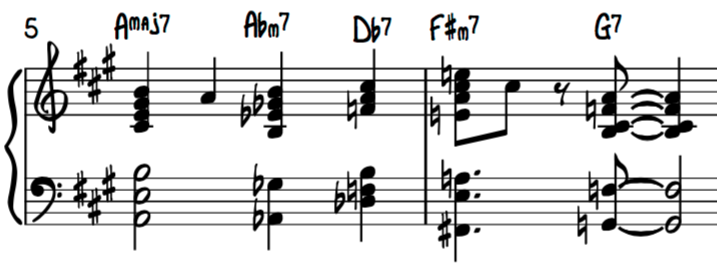"In My Life" by the Beatles, Solo Piano

There are certain songs that are initially written as pop tunes and eventually become part of the jazz repertoire in what I refer to as "cross-over" tunes. "In My Life" by the Beatles is one such tune. But even more than just being labeled a "cross-over" song, I generally use this tune as a cocktail piano piece, and for good reason. It seems to always get a reaction from listeners.
There are many cocktail piano gigs I play in which my tune selection is not always recognized, or perhaps not appreciated (blame the player, not the tune... haha). But every time I play "In My Life" by the Beatles I get someone who comes up to me and says something along the lines of "that was beautiful - I love that song" (and in such an instance credit goes to the song, not the player). In honor of this beautiful song that seems to mean so much to so many different people, we're going to take a look at a jazzed-up version (translation = slight reharmonization) of "In My Life" by the Beatles, solo piano.
The key to a great arrangement, or reharmonization, is to make sure that the melody remains intact and recognizable regardless of what liberties might be taken with the chords. And that's the rule that we're going to follow here - maintain the same melody as the original song. "In My Life" is in the key of A major, and while there are lots of things we could do to the 4-bar intro in terms of reharmonization we're going to leave it alone - again, because we want those first few bars to be instantly familiar to listeners' ears. Here's our 4-bar solo piano intro.
Step two is to start digging into that melody. Again, let's remember our primary rule: as much as possible we do not alter the melody. The chords are fair game, however. The first lyrics begin, "There are places I remember." The original harmony in these two bars is A major, E major, F# minor, A/G (two beats per chord). One of the things I like to do when reharmonizing is to try to find opportunities to insert forward movement in the chords, and one great device for doing this (especially in jazz) is the ii-V-I progression. In our example, I've decided to try to find a "ii-V-I" progression that brings me to the F# minor chord. Keeping the original A major chord, we've taken out the next chord (E major) and in its place inserted a ii-V progression that brings us to F# minor. What chords are we putting in? To answer that question we ask another question: If 'F#' represent the 'i' chord (i.e., the 'target' chord), what would the 'ii' and 'V' chord be? The answer is the Ab (or G#) minor chord and the Db (or C#) dominant chord.
Fleshing out the full harmony might look something like this:
The last twist on the original chords is the G7 (#11) chord which takes the place of the original A/G chord. They're sort of the same thing, but treating the chord as a G7 ensures that both the 'B' and 'F' (3rd and 7th) are included in your chord voicing.
If you like this kind of arranging and reharmonization practice, or if you're interested to check out the full arrangement, check out the complete lesson of "In My Life" by the Beatles, solo piano.


